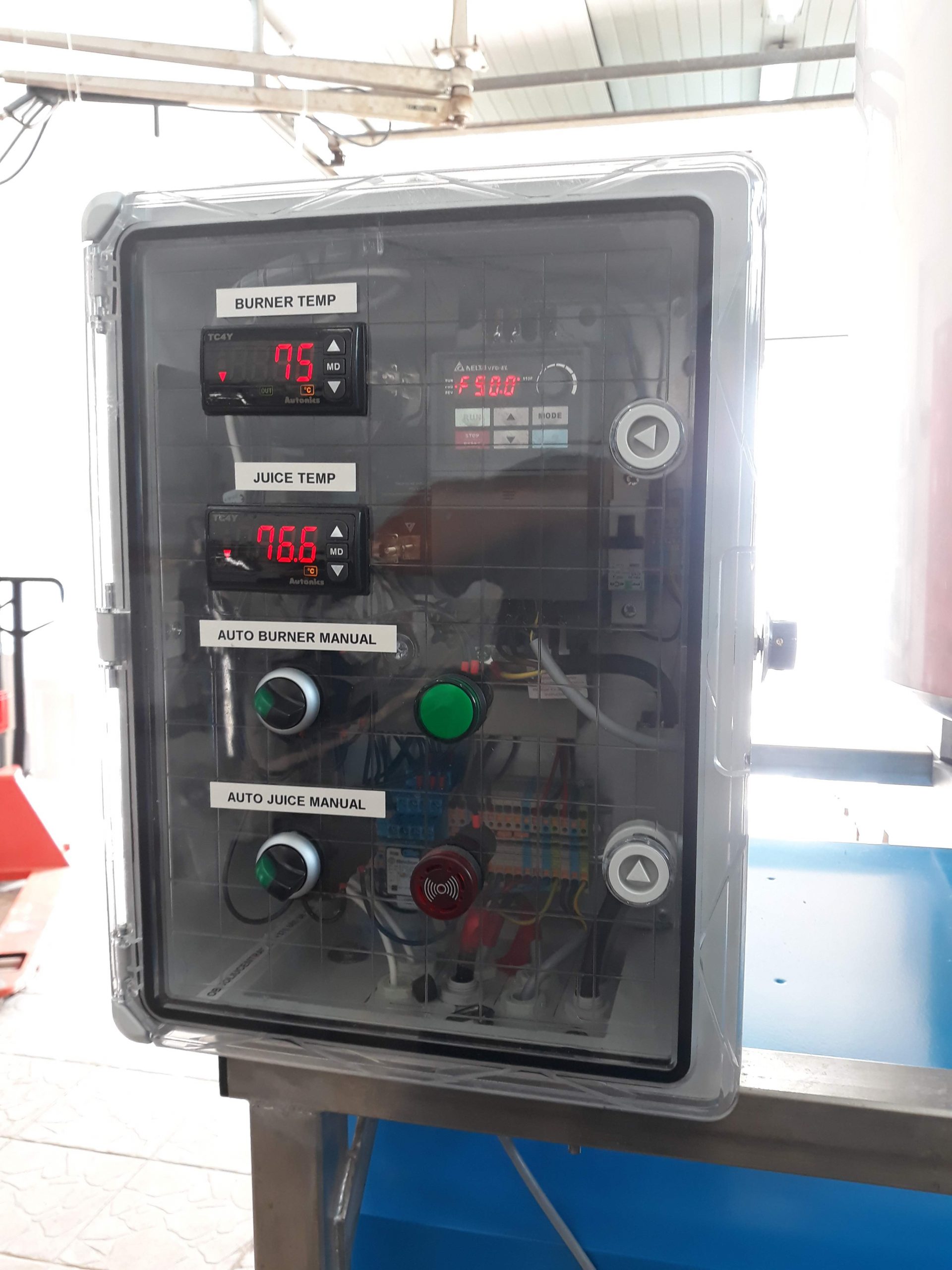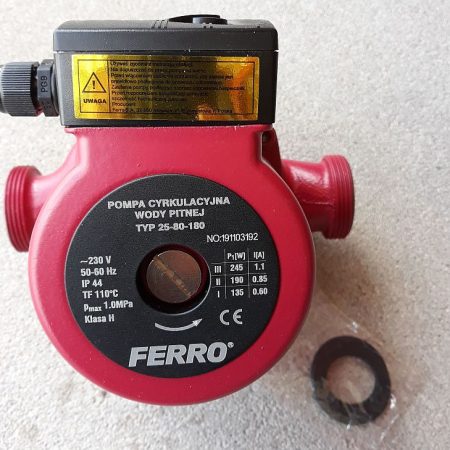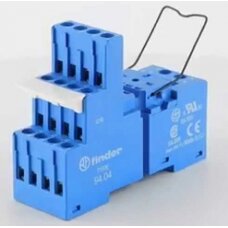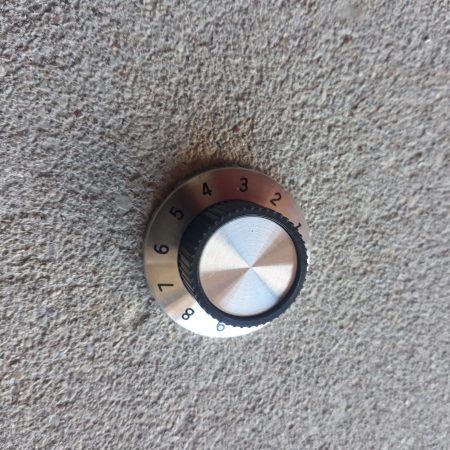Pasterizatoriaus automatika: PLC, VFD, temp & liquid sensors
€1500.00 excl. Vat
Fully programed and assebled pasteriser contril panel with plc.
Our new pasteriser control system alows very efficient and convienent control of pasterisation process.
When the boiler reaches the set temperature, PLC starts juice pump. When there is no more juice in the input pipe the PLC swithes off the juice pump and the boiler. VFD allows to adjust the juice flow rate to precisely match the output capacity of the boiler therefore there is no frequent starts and stops as it happens with the old type control systems that utilizes pneumatic valves for shutting the juice flow and engaging recirculation.
With our pasterisation cotrol system you can reach 90-95% of the rated pasteriser capacity in the real production environment. The older type recirculation type systems in the real production environment usualy reach only 50-60% of the pasteriser rated capacity.
Besides, when the juice batch is finished, the controll systems shuts off the boiler & the juice pump simultaniously, therefore you don’t have to keep monitoring the procees to avoid runing the juice pump dry. Also, since the boiler & juice pump is swithed off all the same time, this prevents boiler from overheating the remaining juice in the heat exchanger.
Once the next batch of juice is ready, you push the button to start the pasterisation process.
https://www.accessdata.fda.gov/ORAU/Pasteurization/PAS_04_summary.htm
—–
Pasteurization of Juice
Lesson Overview
This lesson describes key points about the pasteurization of juice.
After completing this lesson, you should be able to:
List the two main processes for juice pasteurization.
Identify components in juice pasteurizers.
Explain the differences between a HTST system for juice pasteurization and for milk pasteurization.
Description
Pasteurization of juice, like pasteurization of milk and other dairy products, is used to kill any contaminating pathogens that might be contained in the raw juice. The time requirements for juice products depend on the target pathogens, typically the protozoan parasite Cryptosporidium in fresh apple juice and bacterial pathogens in citrus and non-apple juices.
Below are the time and temperature requirements for thermal heat treatment of juice to achieve the 5-log reduction performance standard:
For citrus and non-apple juice or juice from concentrate, 160 °F for 3 seconds.
For apple juice not from concentrate, 160 °F for 6 seconds.
Vat Method
In the vat or batch method of pasteurizing juice:
Heat is applied to one large lot or batch.
The entire batch is held long enough to achieve 5-log reduction.
The juice is cooled after pasteurization.
With this pasteurization method, both the time and temperature of the juice treatment must be monitored to ensure that the process is achieving the 5-log pathogen reduction.
The vat method of juice pasteurization is often used by small juice operators. However, as with any method of pasteurization, the vat method requires proper mixing and temperature monitoring.
Vat Method: Carrot Juice Example
In June, 2012, a juice company recalled all of their vat-pasteurized carrot juice due to a Clostridium botulinum hazard.
C. botulinum can survive high temperatures and thrives in oxygen-free environments. It is most commonly found in low-acid foods such as carrot juice.
The recalled carrot juice was processed at the correct time and temperature in a vat pasteurizer, but after pasteurization, entire 55-gallon drums of hot carrot juice were placed in a refrigerator for an unknown cool-down time.
HTST Method
With the HTST or continuous method of pasteurizing juice, large amounts of product can be heated and cooled quickly.
The process is similar to that used for milk and milk products:
The product flows over plate or tubular heat exchangers.
Heated product then flows through holding tubes.
The product is held for a specific time and temperature in the holding tubes.
HTST Pasteurization of Juice: Differences
While the process used for HTST pasteurization of juice is very similar to that for milk, there are a few differences.
For example, the two types of heat exchangers presented in the previous lesson are used for different types of juice:
Plate heat exchangers (PHEs): These exchangers are similar to those used in dairy pasteurizers, and are commonly used for non-citrus juices. If PHEs are used for processing pulp products, the plates should be dismantled for inspection.
Tubular heat exchangers (THEs): These exchangers are commonly used for citrus juices, because the turbulent flow prevents the pulp of citrus juice from depositing on the surface of the tubes.
Also, the required holding time for HTST pasteurization of juice (3 to 6 seconds) is much shorter than the holding time for HTST pasteurization of milk (15 seconds).
Critical Control Points
As with the pasteurization of milk, there are key critical control points to focus on when conducting inspection of a vat or HTST pasteurizer of juice.
Key questions to ask for either system include:
Were the heating requirements met and continuously monitored during pasteurization?
Were the holding time requirements met and continuously monitored during pasteurization?
Are accurate charts and records kept?
Key questions to ask for HTST systems include:
Are visual checks of the timing pump periodically performed to ensure that it is delivering the proper flow rate?
Is the pasteurized juice discharged from the regenerator properly?
Is the holding tube properly constructed?
Are the vacuum breakers functioning properly?
Lesson Review
You have completed the Pasteurization of Juice lesson. You should now be able to:
List the two main processes for juice pasteurization.
Identify components in juice pasteurizers.
Explain the differences between a HTST system for juice pasteurization and for milk pasteurization.
The next lesson will discuss the pasteurization of other products.





